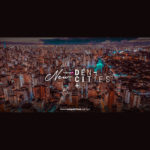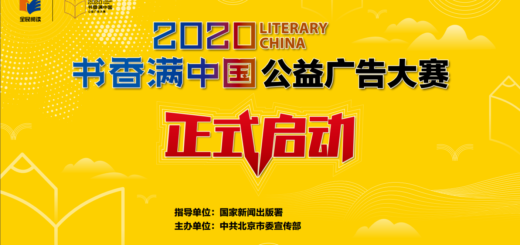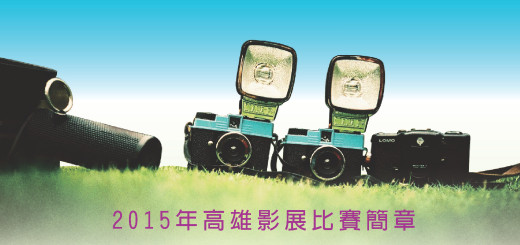New Dencities Post pandemic township design competition
城市是人類空間、社會和環境需求的頂點。城市人口密集的自然本能使我們在金融、社會和環境關係方面取得了指數級增長。然而,COVID-19大流行從根本上改變了人類與城市密度的關係,從而改變了我們對城市的看法。

這些時候,我們看到了從封閉的環境到完全在偏遠地區工作的工作場所/教室級別的巨大轉變。新的工作模式凸顯了旅行的新趨勢,不再在連接郊區和城市的高速公路上運行,而是在連接各大洲的視頻通話上進行。同時,新的受限的生活和工作空間揭示了我們目前的室內空間和社區對於不同的生活方式是多麼的不適應。
競賽挑戰
我們如何才能從根本上重新思考這個城市,不是通過徹底的改革,而是更小的功能模式?我們如何才能創造出這樣一個功能性建築模塊的拼圖,讓生活在這樣的威脅面前繼續?如何將室內環境擴展到一個不因自給自足而與世隔絕的社區?在健康生活( 生理、心理和社會 )成為重中之重的城市中,如何重新解釋密度?
在一個遠距離工作/生活成為現實的未來,通勤本身從我們的日常生活中被完全廢除,我們的社區會是什麼樣子?
設計簡介:開發一個零通勤、混合用途的住宅小區概念,該概念能夠抵禦大流行的影響,並為居住、工作和娛樂在同一個地方的人群而建造。
時間線
- 早鳥註冊時間:2020年5月28日 – 2020年6月28日
- 標準註冊時間:2020年6月28日 – 2021年2月8日
- 提交截止時間:2021年2月9日
- 結果公佈時間:2021年4月8日
獎項設置
- 冠軍:400美元+獎盃和證書製作+出版物+徽章( 對所有人開放 )
- 亞軍:100美元現金+電子證書+徽章( 向所有人開放 )
- 人民選擇:電子證書
*以上競賽信息並不完全,詳情請見官網;如上述內容與官網信息有出入,請以官網為準。

New Dencities Post pandemic township design competition
Cities are the culmination of our spatial, social, and environmental needs as humans. The natural instinct to densify in cities gave us exponential growth in strengthening financial, social, and environmental relationships. The COVID-19 pandemic, however, has fundamentally changed the human relationship to density and thereby our views of cities.
These times have seen massive shifts from a lockdown environment that isolated us from the outdoors to workplace/classroom level shifts of working entirely in the remote. The new models of work highlight the new frontier of travel that no longer operates on highways connecting suburbs to cities, but on video calls linking together continents. At the same time, the new constrained living and working spaces reveal how ill-equipped our current indoor spaces and neighborhoods are for different modes of living.
CHALLENGE
How can we rethink the city fundamentally not by a complete overhaul, but smaller functional models? How can we create a jigsaw of such functional architectural modules that make life go on despite such threats around? How can indoor environments be extended to a neighborhood that does not suffer in isolation due to self-sufficiency? How can densities be reinterpreted in cities where healthy living ( physical, mental, and social ) becomes a top priority?
In a future where remote working/living is established as a reality, where the commute itself is completely abolished from our daily lives, what will our neighborhoods be like?
Design brief: Develop a zero-commute, mixed-use residential neighborhood concept that is resilient to pandemic impacts and is built for a population that lives, works, and plays in the same place.
Digital Blue Foam Guide –
GUIDELINES
You have to deliver an architectural outcome on the following site, based on the given outlines.
• Recommended number of sheets/presentation images/boards:
5 ( Five ) of size [ 2362px x 3544px ] or [ 400mm x 600mm in 150 dpi] in portrait digital format ( JPEG only ).
Minimum 3 ( Three ) & No maximum sheet limit. Each image should be less than 15MB. ( Do not submit PNG format )
Minimum requisite submissions are sheets/boards + Cover image containing:
This is the link for new file sizes, here.
• Site plan ( Compulsory )
• Key conceptual sections x 1 ( Minimum )
• 3D views x 4
• Cover image / Thumbnail of size 2000px x 1000px or larger in aspect ratio 2:1.
• Publish a journal article based on the given questions in Journal Guide.pdf – located inside additional resources
#The FAQ’s have to be answered as instructed in the FAQ document in the ‘additional resources folder’.
VOTING RULES
- People’s Choice Award is applicable to all the participants.
- The People’s choice award will be given on the basis of a project ( in either student or professional category as per the award list ) with most votes.
- You can begin receiving votes on the project as soon as you upload your entry.
- The voting will close as per the date mentioned in the schedule of the competition page. Any votes coming after this date/time will be not counted in the final calculation.
- You can share your project on social media/messaging platforms apart from UNI as well.
- Creating fraudulent/fake/bot/impersonating accounts to increase public votes will be considered as unfair means and may lead to disqualification with a notice.
AWARDS & FEES
The fee to participate grows based on the number of registrations received. Similarly, the prize money proportionally grows with rising participating entries. A total of 500 entries will be accepted in the competition till the last deadline. If the competition reaches a total registered entry of 500, then the participation process will be closed at a total prize pool of 20,000 USD.
This implies, the sooner you register, the less you will pay as fees. The number of teams you will compete with, the higher the amount of prize you will be entitled to receive.
SCHEDULE
- May 28, 2020 15:00 GMT
Public voting starts - May 28, 2020 15:00 GMT
Early Registrations starts - Jun 28, 2020 14:59 GMT
Early Registrations ends - Jun 28, 2020 15:00 GMT
Registration starts - Feb 8, 2021 15:00 GMT
Registration ends - Feb 9, 2021 15:00 GMT
Submission ends - Feb 24, 2021 15:00 GMT
Shortlisted entries announced - Mar 2, 2021 15:00 GMT
Jury evaluation starts - Mar 26, 2021 15:00 GMT
Jury evaluation ends - Mar 27, 2021 15:00 GMT
Public voting ends - Apr 8, 2021 15:00 GMT
Result announcement
JURY

Awards & Fees




